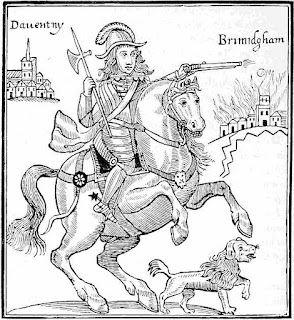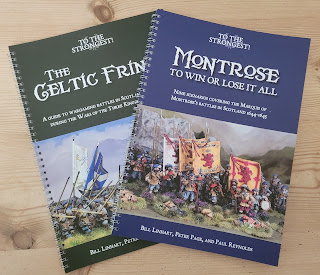Rupert's March North: Part One, Cheshire
Regular readers (hello both of you) will realise that my mini-series of battlefield visits is on a bit of a break, due to my battlefield 'hit-list' being not so local anymore. However there were a number of skirmishes and sieges locally. Each of these actions probably doesn't warrant an article by itself, however many of these incidents were related to Rupert's march to York. So I have decided to retrace Rupert's route through Cheshire and Lancashire, adding in any other events/locations as asides. For ease of writing south of the Mersey is 'Cheshire', north of the Mersey is 'Lancashire'.
1644, the Marquis of Newcastle is under siege in York, a last stronghold of Royalist power in the north. The Parliamentarian army of the Eastern Association has been joined by the Scots army of the Solemn League and Covenant. A beleaguered Newcastle has requested help from the King in his stronghold at Oxford.
Charles dispatches Prince Rupert north with an army, and is expected to augment his numbers en route to York.
Handforth Hall/Honford Hall was the home of Sir William Brereton, the Parliamentarian victor at the battle of Nantwich. Sadly the Hall is now a private property. After Sir William died his body was being returned to Handforth for burial, but the coffin was swept away in a flood at a river crossing in Croydon and never recovered.
Little Moreton Hall is a moated timber framed hall that looks like it is straight out of a Harry Potter film set. The Moreton family were Royalists, and had the hall requisitioned to billet Parliamentarian soldiers. The family eventually recovered the Hall but were financially ruined. The Hall is presented to the public in all it's Tudor/Stuart finery. Possibly Little Moreton Hall's greatest claim to fame is that nobody of any historical note ever slept there. People who own a spirit level might need a lie down after visiting, as there isn't a level surface in sight.
Lyme Hall is a typical National Trust estate: deer, posh coffee, gift shop, expensive car park. It featured in the BBC adaptation of 'Pride and Prejudice', and a Warburton's advert 'Pride and Breadjudice'*. Neither Mr Darcy nor Peter Kay can be seen emerging from the lake at the front of the property, sorry to disappoint.
The Legh family were supporters of the King; once Charles had been executed, his death cloak was spirited away, and sections were distributed to loyal households. Lyme received a piece and it was used to upholster the underneath of a chair. It couldn't be put on open display for fear of retribution from the Commonwealth, so was used to upholster the underneath of some chairs.
The hall is home to some of Grinling Gibbons finest work.
Peover has a connection to the Mainwairing family. the family tombs and memorials are located at St Lawrence's Church, Sir Philip Mainwairing's civil war armour is on display here too.
Their home, Peover Hall is open to the public during the summer months, possibly more famous for being General Patton's headquarters during the second world war though. Also used as one of the locations for the BBC series Peaky Blinders.
Selected Bibliography
On The Civil War Trail J.P.Mann, Cheshire County Council
The Civil Wars in Cheshire R.N.Dore, Cheshire Community Council
1644, the Marquis of Newcastle is under siege in York, a last stronghold of Royalist power in the north. The Parliamentarian army of the Eastern Association has been joined by the Scots army of the Solemn League and Covenant. A beleaguered Newcastle has requested help from the King in his stronghold at Oxford.
Charles dispatches Prince Rupert north with an army, and is expected to augment his numbers en route to York.
 |
| Prince Rupert and his witch's familiar, Boye the hunting poodle. |
19th May, Rupert entered Cheshire with a 10000 strong army. In the south of the county his army bivouacked at Rudheath , the encampment site now lost to development; Knutsford Heath, which is still protected open land; and Bowdon Downs, again lost to development. Whilst camped on Knutsford Heath, the poorly paid royalist army pillaged Knutsford. A large Parliamentarian force also camped here in 1651 en route to Worcester.
 |
| Knutsford Heath |
Rupert needed to cross the River Mersey, and set out to cross the river at the lightly fortified town of Stockport.
 |
| William Davenport |
Prior to entering Stockport, Rupert's army overnighted at Bramall Hall, it's owner William Davenport complaining: "in May 1644 came Prince Rupert his army, by whom I lost better than a hundred pounds in linens and other goods... besides the rifling and pulling in pieces of my house."
 |
| Bramall is home to possibly the finest original Tudor plaster ceiling in existence |
Horses, tack and hay were also taken, but the house itself received little damage. The shop/visitor centre at the Hall has an interactive console concerning Rupert's men, and William's diary of their visit.
Bramall Hall is beautifully preserved and is open to the public. Limited parking is available. Fans of "Last Tango in Halifax" may recognise it as the Hall where Alan and Celia got locked in overnight.
 |
| Bramall Hall |
Rupert besieged Stockport on the 25th May, Washington's dragoons leading the attack. The Parliamentarian garrison fled almost before the first musket balls hit their mark. Rupert and his army went onto sack the town, an event recreated almost every Friday and Saturday night by the locals.
Other stuff:
Stockport is probably best driven through quickly (and I say that as an Old Stopfordian), as it hasn't changed much in demeanour since Frederick Engels described it as “one of the dustiest, smokiest holes” in 1844.
Stockport marketplace dates to medieval times and is the location of two buildings of interest, and the site where Stockport Castle stood (the area by the side of the Bakers Vaults): Staircase House, a Fifteenth century house which is now a museum, rooms are laid out to represent the house through the ages (a combined ticket allows entry to both the House and Bramall Hall); and St Mary's in the marketplace, originally dating from 1190. The present church is a Victorian monstrosity, famous for holding the parish register in which John Bradshaw's birth was recorded in 1602. Bradshaw was Lord-President of the High Court of Justice and presided over the trial of Charles I, pronouncing the sentence of death. His birth entry in the parish register has had the word 'traitor' added at a later date. His body was exhumed from Westminster Abbey and executed.
 |
| Bradshaw's birth record - note 'traitor' added bottom right hand corner |
Bradshaw was born in High Lane, either at Wybersley Hall, or at the nearby Peace Farm/The Place in Marple. Wybersley Hall is a private property but can been seen from the roadside.
Peace Farm/The Place has long since been demolished, but a blue plaque commemorates his birth on the side of the petrol station shop which now stands on the site.
Handforth Hall/Honford Hall was the home of Sir William Brereton, the Parliamentarian victor at the battle of Nantwich. Sadly the Hall is now a private property. After Sir William died his body was being returned to Handforth for burial, but the coffin was swept away in a flood at a river crossing in Croydon and never recovered.
 |
| Handforth Hall |
 |
| Little Moreton Hall |
The Legh family were supporters of the King; once Charles had been executed, his death cloak was spirited away, and sections were distributed to loyal households. Lyme received a piece and it was used to upholster the underneath of a chair. It couldn't be put on open display for fear of retribution from the Commonwealth, so was used to upholster the underneath of some chairs.
The hall is home to some of Grinling Gibbons finest work.
 |
| "The craziest Elizabethan frontispiece" Pevsner's description of this façade of Lyme |
Their home, Peover Hall is open to the public during the summer months, possibly more famous for being General Patton's headquarters during the second world war though. Also used as one of the locations for the BBC series Peaky Blinders.
For more Cheshire related Civil War sites see also:
Selected Bibliography
On The Civil War Trail J.P.Mann, Cheshire County Council
The Civil Wars in Cheshire R.N.Dore, Cheshire Community Council
Postcodes for SatNavs
Knutsford Heath on street parking WA16 0NB
Bramall Hall SK7 3NX
St Mary's Stockport SK1 2LX
Texaco, Marple (site of Peace Farm) SK6 6DQ
Wybersley Hall SK6 8HB
Handforth Hall SK9 3AE
Texaco, Marple (site of Peace Farm) SK6 6DQ
Wybersley Hall SK6 8HB
Handforth Hall SK9 3AE
Little Moreton Hall CW12 4SD
Lyme Hall SK12 2NX
Peover Hall WA16 9HW
St Lawrence's Church, Over Peover WA16 9PY
Peover Hall WA16 9HW
St Lawrence's Church, Over Peover WA16 9PY
*whatever you do, do not, under any circumstances mention the advert to the volunteer guides at the hall - they get very upset and agitated, and need to go and lie down
Part 1 points of interest - purple
Part 2 green
Part 3 orange
Part 4 has its own map
Part 1 points of interest - purple
Part 2 green
Part 3 orange
Part 4 has its own map
If you enjoyed reading this, or any of the other posts, please consider supporting the blog.
Thanks.



















Comments
Post a Comment